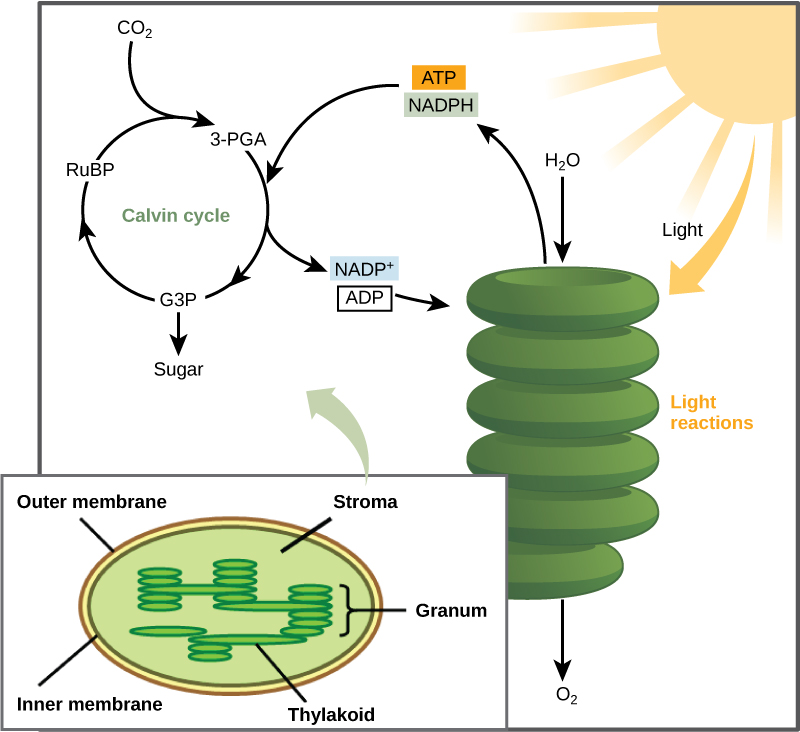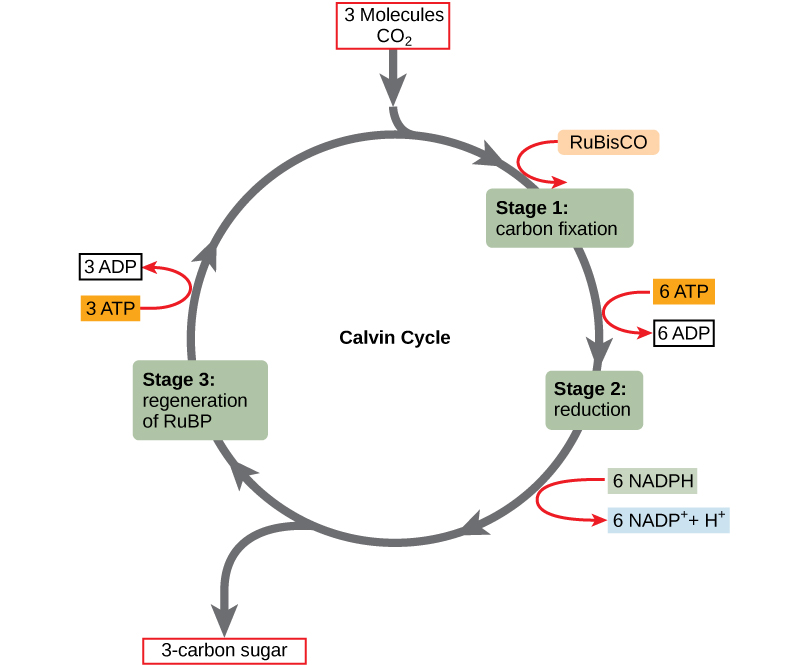| << Chapter < Page | Chapter >> Page > |
After the energy from the sun is converted and packaged into ATP and NADPH, the cell has the fuel needed to build food in the form of carbohydrate molecules. The carbohydrate molecules made will have a backbone of carbon atoms. Where does the carbon come from? The carbon atoms used to build carbohydrate molecules comes from carbon dioxide, the gas that animals exhale with each breath. The Calvin cycle is the term used for the reactions of photosynthesis that use the energy stored by the light-dependent reactions to form glucose and other carbohydrate molecules.
In plants, carbon dioxide (CO 2 ) enters the chloroplast through the stomata and diffuses into the stroma of the chloroplast—the site of the Calvin cycle reactions where sugar is synthesized. The reactions are named after the scientist who discovered them, and reference the fact that the reactions function as a cycle. Others call it the Calvin-Benson cycle to include the name of another scientist involved in its discovery ( [link] ).

The Calvin cycle reactions ( [link] ) can be organized into three basic stages: fixation, reduction, and regeneration. In the stroma, in addition to CO 2 , two other chemicals are present to initiate the Calvin cycle: an enzyme abbreviated RuBisCO, and the molecule ribulose bisphosphate (RuBP). RuBP has five atoms of carbon and a phosphate group on each end.
RuBisCO catalyzes a reaction between CO 2 and RuBP, which forms a six-carbon compound that is immediately converted into two three-carbon compounds. This process is called carbon fixation , because CO 2 is “fixed” from its inorganic form into organic molecules.
ATP and NADPH use their stored energy to convert the three-carbon compound, 3-PGA, into another three-carbon compound called G3P. This type of reaction is called a reduction reaction, because it involves the gain of electrons. A reduction is the gain of an electron by an atom or molecule. The molecules of ADP and NAD + , resulting from the reduction reaction, return to the light-dependent reactions to be re-energized.
One of the G3P molecules leaves the Calvin cycle to contribute to the formation of the carbohydrate molecule, which is commonly glucose (C 6 H 12 O 6 ). Because the carbohydrate molecule has six carbon atoms, it takes six turns of the Calvin cycle to make one carbohydrate molecule (one for each carbon dioxide molecule fixed). The remaining G3P molecules regenerate RuBP, which enables the system to prepare for the carbon-fixation step. ATP is also used in the regeneration of RuBP.


Notification Switch
Would you like to follow the 'Concepts of biology' conversation and receive update notifications?